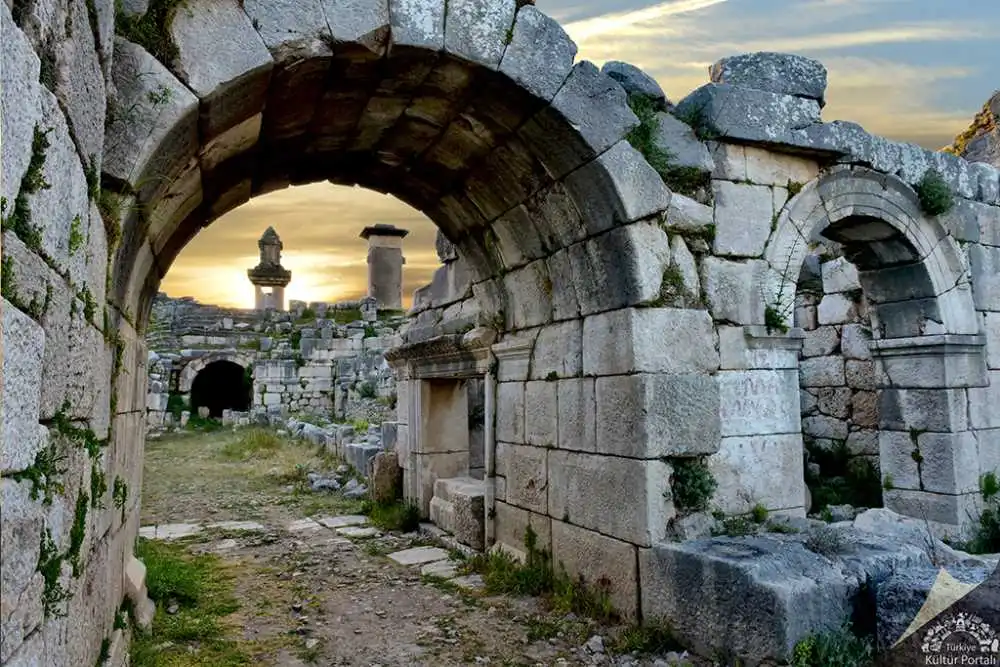Xanthos Ancient City
Description
Located in the town of Kınık on the Fethiye-Kaş highway, 46 kilometers from Fethiye, the city was built on two hills overlooking the plain on the banks of the Xanthos River (Eşen Stream). The first of these is the walled Lycian Acropolis rising as a steep cliff from the edge of the Eşen Stream, and the second is the higher and wider Roman Acropolis to the north. The name of Xanthos, which is described as the administrative center of the Lycian Union, is mentioned as ARNNA in the inscriptions written in Lycian language. Homer tells that the Xanthosians under Sarpedon participated in the Trojan wars. However, the finds from the excavations do not allow us to date the settlement of the city before the 8th century BC.
The city was besieged by the Persian Commander Harpagos in 545-546 BC. Although the Xanthosians heroically resisted and fought back, they became desperate, killed their women and children and set the city on fire, leaving Harpagos with an uninhabited and ruined city. Between 475-450 BC, Xanthos once again suffered a fire disaster. Alexander the Great captured the city in 334 BC. After Alexander's death, Xanthos had to accept the sovereignty of the Egyptian dynasty Ptolemies from 309 BC, and then, like many Lycian cities, the Syrian King Antiochus III. Xanthos, which was the capital of the Lycian Union in the 2nd century BC, was destroyed by the Roman Brutus in 42 BC, but was later rebuilt with the efforts of Emperor Marcus Antony II. In Xanthos, which came under Roman rule in the 1st century AD, an arch was built in the name of Emperor Vespasianus and most of the surviving Roman buildings were built during this period. Xanthos, which was a bishopric center during Byzantine rule, gained many new buildings during this period. After the 7th century, Arab raids caused the city to lose its importance and it continued to live as a small village near Kınık until Charles Fellows discovered it in 1838 and carried some ruins to London.The archaeological site of Xanthos was included in the World Cultural Heritage List by UNESCO due to the authenticity of the Lycian civilization and the importance of the excavations.
Short Description
Located in the town of Kınık on the Fethiye-Kaş highway, 46 kilometers from Fethiye, the city was built on two hills overlooking the plain on the banks of the Xanthos River (Eşen Stream). The first of these is the walled Lycian Acropolis rising as a steep cliff from the edge of the Eşen Stream, and the second is the higher and wider Roman Acropolis to the north. The name of Xanthos, which is described as the administrative center of the Lycian Union, is mentioned as ARNNA in the inscriptions written in Lycian language. Homer tells that the Xanthosians under Sarpedon participated in the Trojan wars. However, the finds from the excavations do not allow us to date the settlement of the city before the 8th century BC.




